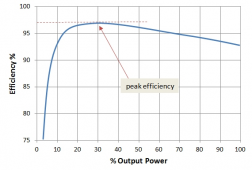Hi everyone,
I built a DIY system with the help of Will's youtube video. Its a 1012LV-MS 12v 1000 W alliin-one inverter with 12v 4s overkill BMS, and four 300 Ah CATL Lifep04 cells. I just finished building it and during the first couple days of testing, I have noticed that the unit starts off charging my battery at 500 watts (this is the solar charge controller max input for the unit) and then after a few hours of that, it only takes in about 200 watts from the panels for multiple hours. The sun conditions are the same, if not better during this time, so its not an environmental issue, and this doesn't happen on my Bluetti unit, so I assume its not a panel issue. This drop in input seems to happen at 60 or 70% charge voltage, which is quite a bit lower than the 80% battery charge that I have read can cause a drop in charge current. I know these things aren't an exact science and that readings can be off, but it's hard to use my full capacity when it takes multiple extra hours to even get to 80% or 90%. My bluetti ACP200 takes the full solar wattage all the way up to "100%" (according to the digital display). Is this an issue with settings, my own ignorance, or one of the components? Thanks!
I built a DIY system with the help of Will's youtube video. Its a 1012LV-MS 12v 1000 W alliin-one inverter with 12v 4s overkill BMS, and four 300 Ah CATL Lifep04 cells. I just finished building it and during the first couple days of testing, I have noticed that the unit starts off charging my battery at 500 watts (this is the solar charge controller max input for the unit) and then after a few hours of that, it only takes in about 200 watts from the panels for multiple hours. The sun conditions are the same, if not better during this time, so its not an environmental issue, and this doesn't happen on my Bluetti unit, so I assume its not a panel issue. This drop in input seems to happen at 60 or 70% charge voltage, which is quite a bit lower than the 80% battery charge that I have read can cause a drop in charge current. I know these things aren't an exact science and that readings can be off, but it's hard to use my full capacity when it takes multiple extra hours to even get to 80% or 90%. My bluetti ACP200 takes the full solar wattage all the way up to "100%" (according to the digital display). Is this an issue with settings, my own ignorance, or one of the components? Thanks!



